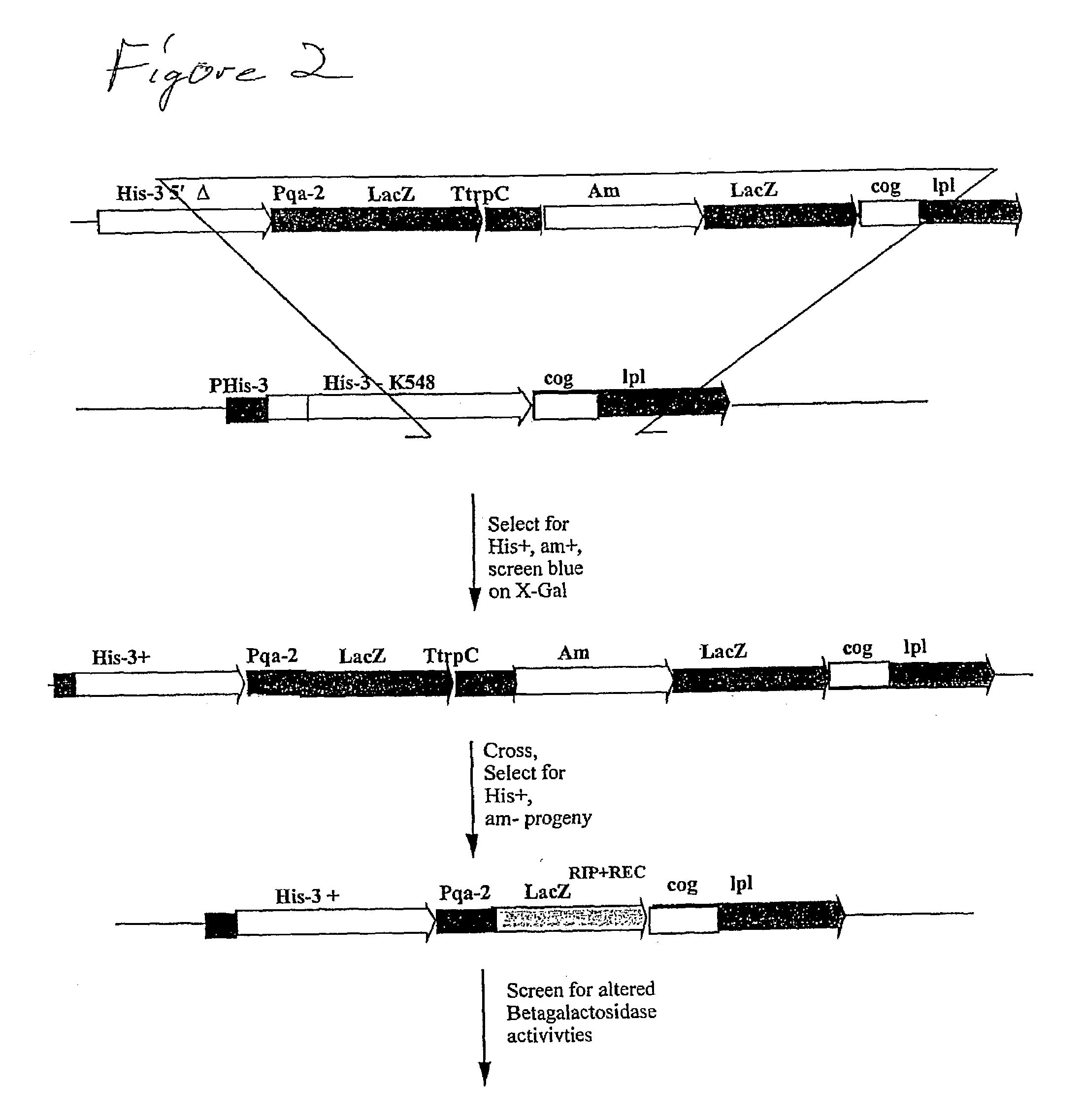Methods for in vivo diversification of single genes
a single gene and in vivo technology, applied in the field of in vivo diversification of single genes, can solve the problems of inability to adapt to the environment, difficulty in compounding the difficulty of in vitro-manipulated sequence methods, and subsequent introduction of altered sequences into test cells for subsequent protocols
- Summary
- Abstract
- Description
- Claims
- Application Information
AI Technical Summary
Benefits of technology
Problems solved by technology
Method used
Image
Examples
Embodiment Construction
[0017]One cellular process that can induce mutations is known as Repeat Induced Point (RIP) mutation, a phenomenon discovered in Neurospora crassa, whereby duplicated sequences are subjected to mutation during the sexual cycle, but prior to meiosis (Selker, Cambareri, Jensen,& Haack, 1987). RIP has also been found to occur in Podospora anserina (Hamann, Feller, Osiewacz, 2000). RIP mutation is presently used to inactivate specific DNA sequences in order to obtain null alleles of the gene of interest (Selker, Cambareri, Garrett, Jensen, Haack, Foss, et al., 1989). Such alleles are easily isolated due to the high efficiency of RIP mutation, and the multiple mutations typically induced in the target gene sequences (Cambareri, Jensen, Schabtach, & Selker, 1989), and the heavy cytosine DNA-methylation that is frequently associated with RIP mutations.
[0018]The present invention, however, utilizes an unobvious aspect of certain types of RIP mutation events. Rather than using RIP to inactiv...
PUM
| Property | Measurement | Unit |
|---|---|---|
| pore sizes | aaaaa | aaaaa |
| pore sizes | aaaaa | aaaaa |
| volume | aaaaa | aaaaa |
Abstract
Description
Claims
Application Information
 Login to View More
Login to View More - R&D
- Intellectual Property
- Life Sciences
- Materials
- Tech Scout
- Unparalleled Data Quality
- Higher Quality Content
- 60% Fewer Hallucinations
Browse by: Latest US Patents, China's latest patents, Technical Efficacy Thesaurus, Application Domain, Technology Topic, Popular Technical Reports.
© 2025 PatSnap. All rights reserved.Legal|Privacy policy|Modern Slavery Act Transparency Statement|Sitemap|About US| Contact US: help@patsnap.com



